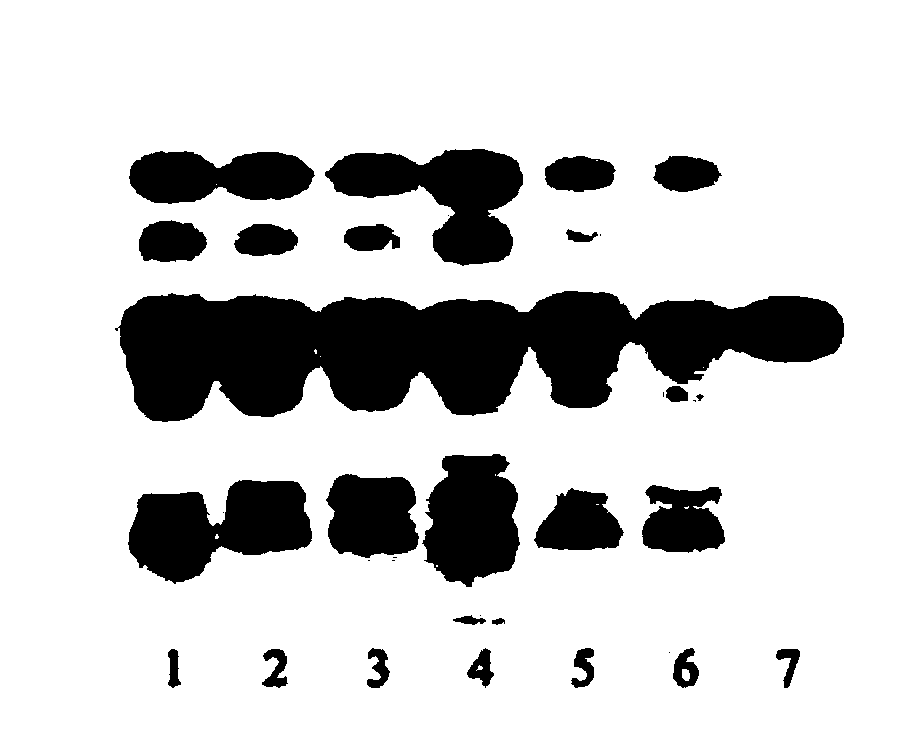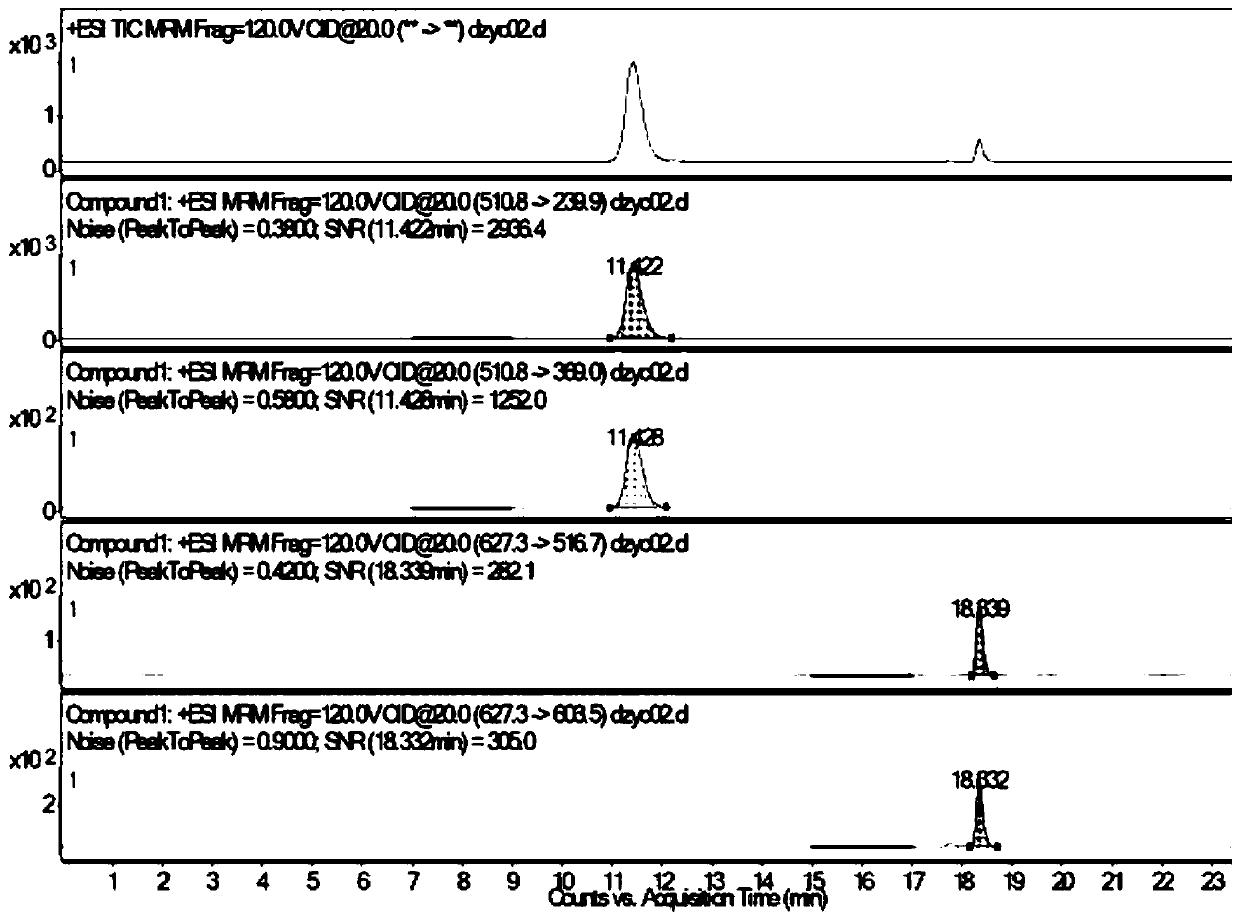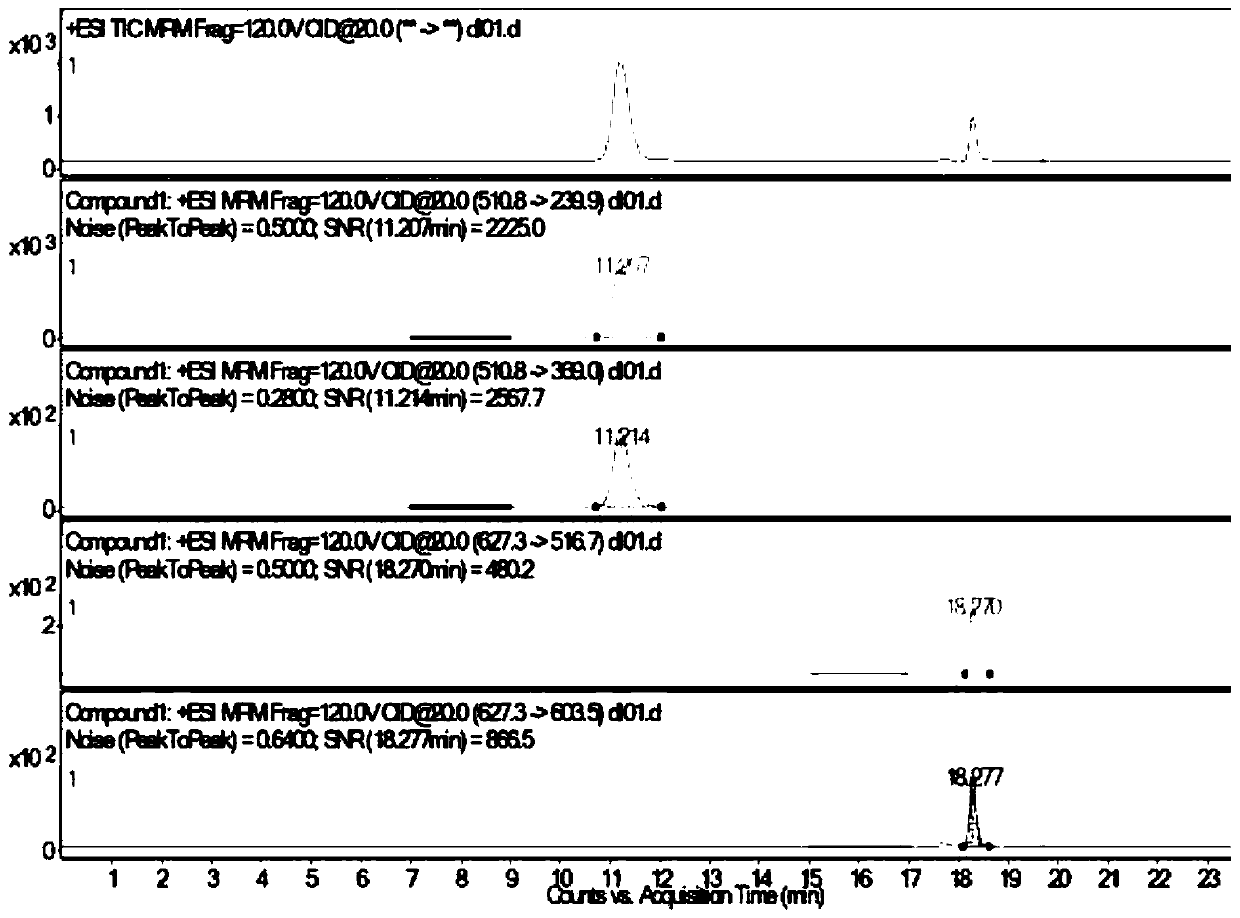Identification method of periplaneta americana
A cockroach and enzymolysis technology, which is applied to instruments, measuring devices, scientific instruments, etc., can solve the problem that DNA identification cannot be applied to extracts and preparations, and can not quickly and accurately distinguish or identify cockroach and its pseudo-products. and other problems to achieve the effect of rapid identification
- Summary
- Abstract
- Description
- Claims
- Application Information
AI Technical Summary
Problems solved by technology
Method used
Image
Examples
Embodiment 1
[0063] The cockroach control medicinal materials, American cockroach control medicinal materials, German cockroach medicinal materials, Dubia medicinal materials and wood beetle medicinal materials were tested, as follows:
[0064] Take about 2.5g of powder samples respectively, put them in a stoppered Erlenmeyer flask, add 50mL ether, sonicate for 30 minutes, filter, evaporate the residue to dry ether, add 50mL of 85% ethanol, sonicate for 30 minutes, centrifuge, and pour off the supernatant , the residue was dried in an oven at 60°C for 3 hours, taken out, added 20mL of 1% ammonium bicarbonate solution, ultrasonically treated for 30 minutes, filtered through a microporous membrane, and the total protein concentration was measured at 280nm ultraviolet light. Dilute until the absorbance of the solution is about 1.0, draw 100 μL of the above-mentioned filtrate into a micro-injection bottle, add 25 μL of trypsin (take trypsin for sequence analysis, add 1% ammonium bicarbonate sol...
Embodiment 2
[0071] Take 2.5g of medicinal material powder to be identified (batch number: Q20170802, place of origin: Weishan, Dali, Yunnan), put it in a stoppered Erlenmeyer flask, add 50mL of diethyl ether, sonicate for 30 minutes, filter, evaporate the residue to dry diethyl ether, add 50mL of 85% ethanol Sonicate for 30 minutes, centrifuge, pour off the supernatant, dry the residue in an oven at 60°C for 3 hours, take it out, add 1% ammonium bicarbonate solution 20mL, sonicate for 30 minutes, filter through a microporous membrane, absorb the above Put 100 μL of the filtrate into a micro-injection vial, add 30 μL of trypsin (take trypsin for sequence analysis, add 1% ammonium bicarbonate solution to make a solution containing 0.25 mg per 1 mL, and prepare it just before use), and place it in an oven at 37 °C to keep the temperature Enzymolysis for 24 hours, as the test solution.
[0072] Carry out LC-MS detection by the same method as in Example 1, take the test solution, and inject 4 ...
Embodiment 3
[0074] Take 1.5g of the medicinal material extract of the genus Blattella to be identified, add 20mL of 1% ammonium bicarbonate solution, ultrasonicate for 30 minutes, filter with a microporous membrane, absorb 100μL of the above filtrate and put it into a micro-injection bottle, add 25μL of trypsin (Take trypsin for sequence analysis, add 1% ammonium bicarbonate solution to make a solution containing 0.25mg per 1mL, and prepare it before use), put it in a 37°C oven for constant temperature enzymolysis for 24 hours, and use it as the test solution.
[0075] Carry out LC-MS detection by the same method as in Example 1, take the test solution, and inject 4 μL. The detected MRM spectrum is as Figure 8 As shown, the signal-to-noise ratio of the MRM chromatographic peaks is greater than 3:1, and the medicinal material extract is identified as the Periplaneta americana extract by the MRM spectrum.
PUM
 Login to View More
Login to View More Abstract
Description
Claims
Application Information
 Login to View More
Login to View More - R&D
- Intellectual Property
- Life Sciences
- Materials
- Tech Scout
- Unparalleled Data Quality
- Higher Quality Content
- 60% Fewer Hallucinations
Browse by: Latest US Patents, China's latest patents, Technical Efficacy Thesaurus, Application Domain, Technology Topic, Popular Technical Reports.
© 2025 PatSnap. All rights reserved.Legal|Privacy policy|Modern Slavery Act Transparency Statement|Sitemap|About US| Contact US: help@patsnap.com



